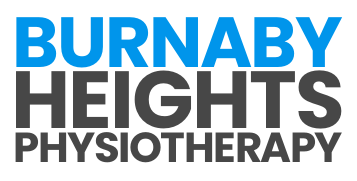Discover How IMS Therapy for Fibromyalgia Relief Works
October 27, 2025Experience the Benefits of Dry Needling for Shoulder Pain
October 27, 2025IMS therapy for nerve pain can offer significant relief when you feel stuck in a cycle of chronic discomfort. You might notice tense muscles, constant tingling, or even numbness—intramuscular stimulation (IMS) is designed to help you reclaim your movement and quality of life. Below, you will discover how it works, what to expect during treatment, and how to decide if it is right for you.
Understand IMS Therapy
IMS therapy involves the use of thin, sterile needles to target areas of muscle tension or what professionals call “trigger points.” By carefully inserting these needles, your practitioner aims to decrease stiffness, improve circulation, and reduce the pressure that contributes to nerve irritation. Unlike acupuncture, which is rooted in traditional Chinese medicine, IMS is guided by a modern understanding of anatomy and clinical science.
Know How Nerve Pain Works
Nerve pain arises when irritated or compressed nerves send ongoing signals to your brain. This can result in burning, pins-and-needles sensations, or even sharp jolts of discomfort in specific areas of your body. Muscular imbalances often play a large role in amplifying these signals—when your muscles seize up, they can squeeze or aggravate nearby nerves.
Common causes of nerve pain include:
- Muscle fatigue or strain from repetitive movements
- Spinal issues that pinch nerves
- Posture-related strain in the neck or back
- Tension build-up around joints
If you struggle with persistent pain in your back, you might also explore our guide on ims therapy for back pain relief to see how it compares with other approaches.
See How IMS Treats Nerve Pain
IMS therapy for nerve pain works by relaxing tight muscles so that they no longer aggravate the nerves underneath. During a session, your practitioner identifies the specific spots that trigger your pain response. A thin needle then creates a small, controlled stimulus in that muscle, prompting your body to reset and release tension.
With less muscular tension, your nerves experience less pressure, and those sharp or tingling sensations often begin to fade. If you suffer from headaches or migraines, ims therapy for headaches and migraines may also be an option for you to consider.
Know What to Expect in Treatment
While each session may vary, here’s a general idea of what typically happens:
- Evaluation: Your practitioner analyzes your posture, movement, and pain patterns.
- Targeted Needling: Thin needles are inserted into specific trigger points. You might feel a slight sting or achy sensation.
- Muscle Release: The muscles often contract briefly, then relax, which can ease tightness and pressure on the nerve.
- Follow-Up Plan: You will likely receive stretches or light exercises to reinforce healthy muscle function between sessions.
You may see real improvements over several appointments, though some individuals feel noticeable relief right after the first session. If you have neck pain from hours at a desk, read about dry needling for neck pain and stiffness for additional suggestions on managing posture-induced tension.
Explore Additional Benefits
Beyond calming irritated nerves, IMS therapy can support you in other ways:
- Enhanced Blood Flow: Better circulation transports nutrients to your muscles, promoting faster healing.
- Improved Range of Motion: Loosened muscles reduce stiffness, letting you move more freely.
- Reduced Reliance on Medication: By targeting the root cause―tight tissues pressing on nerves―IMS may lower your need for painkillers.
- Long-Term Muscle Health: With consistent treatments and recommended exercises, your muscles are less likely to revert to chronic tension.
Many people also explore IMS for broader pain syndromes, such as ims therapy for fibromyalgia relief, to see if local muscle relaxation can help manage diffuse discomfort.
Check If IMS Therapy Fits You
IMS therapy could be a strong option if you:
- Struggle with chronic nerve or muscle pain
- Experience frequent knots or tension in target areas
- Want a non-surgical, non-pharmacological treatment route
- Aim for improved mobility and reduced stiffness
If your nerve pain is tied to specific injuries or surgeries, you may wish to learn about ims therapy for rehabilitation after injury or surgery to see how it might fit into your overall recovery plan.
In deciding whether IMS therapy suits your needs, consult with a qualified professional. You can discuss your medical history, identify potential trigger points, and map out a treatment schedule that supports your wellness goals.
By understanding each step of the process—from how nerve pain starts to how IMS therapy can loosen tight muscles—you equip yourself to make the right call. Take it one session at a time, follow your practitioner’s guidance on exercises, and monitor your progress. You might find that IMS therapy gives you the relief you have been seeking and a new sense of freedom in everyday life.


